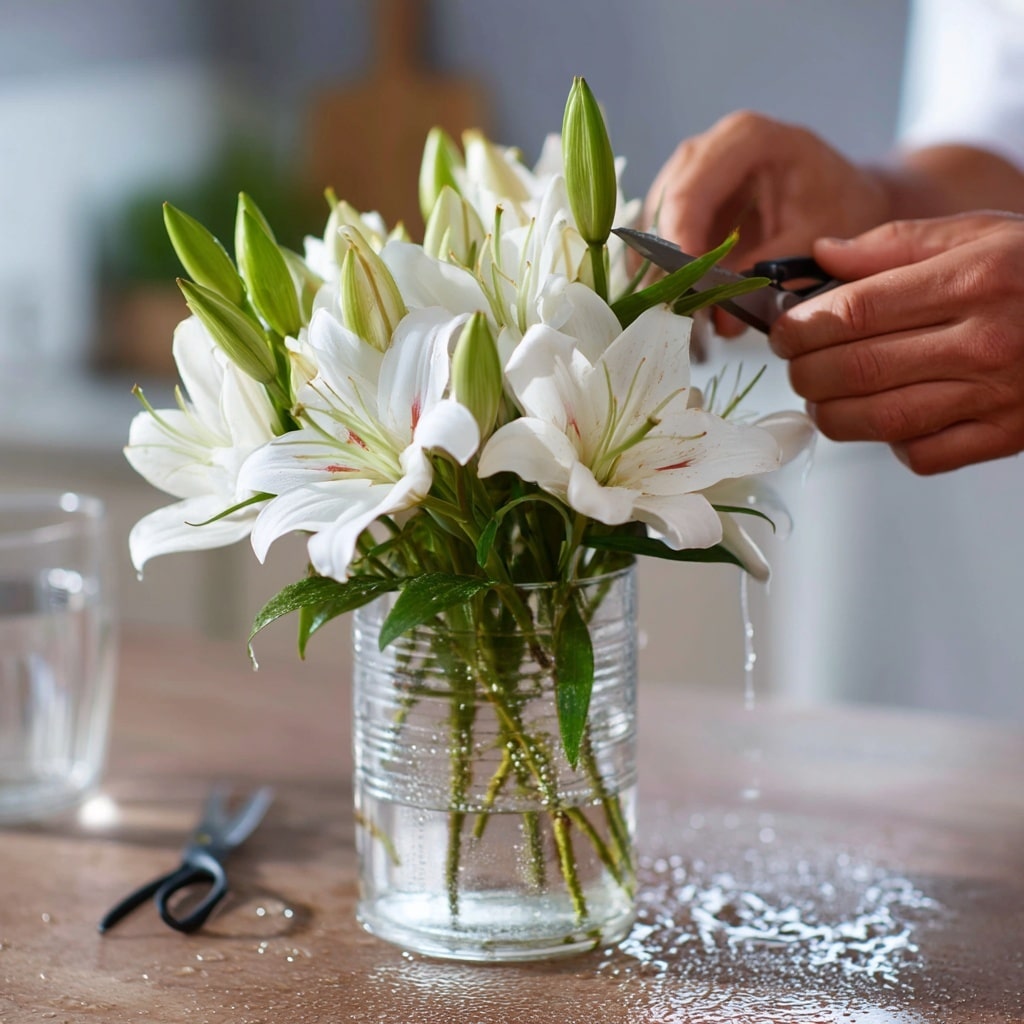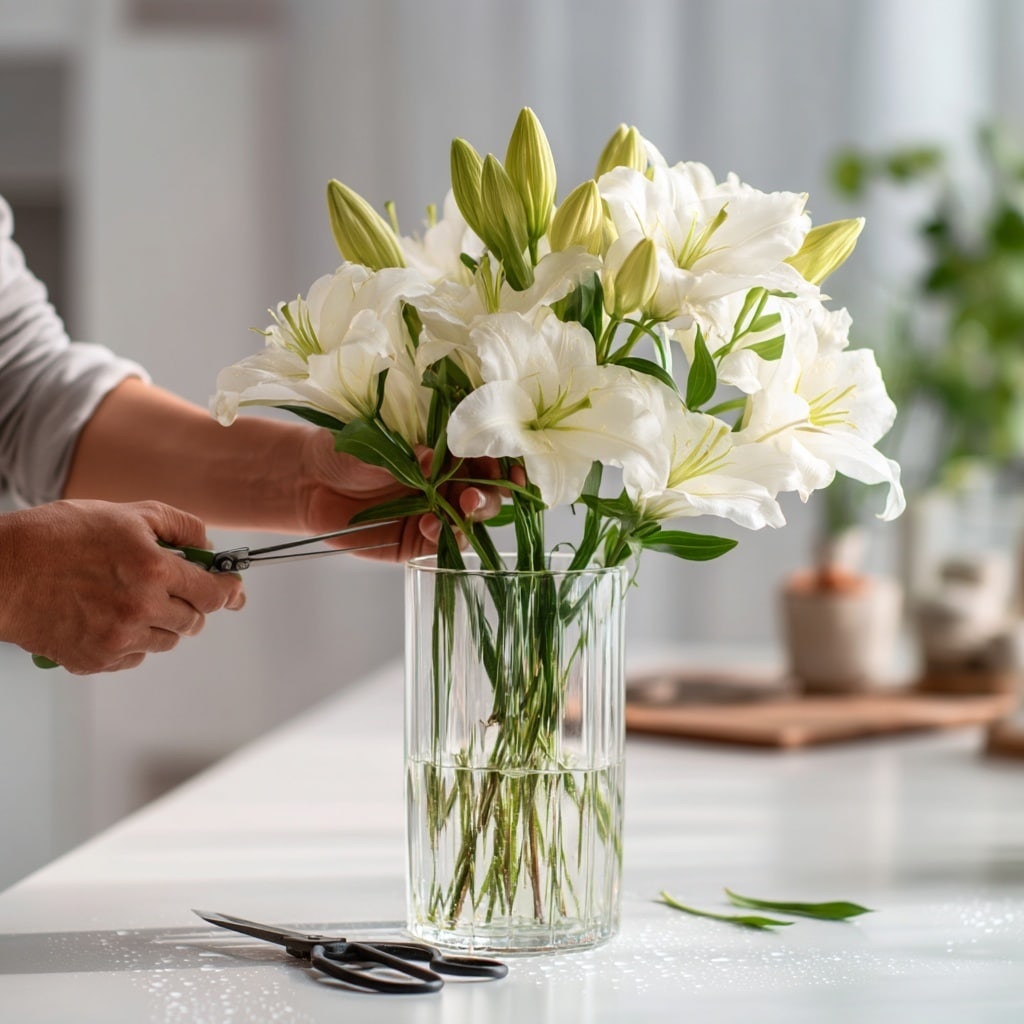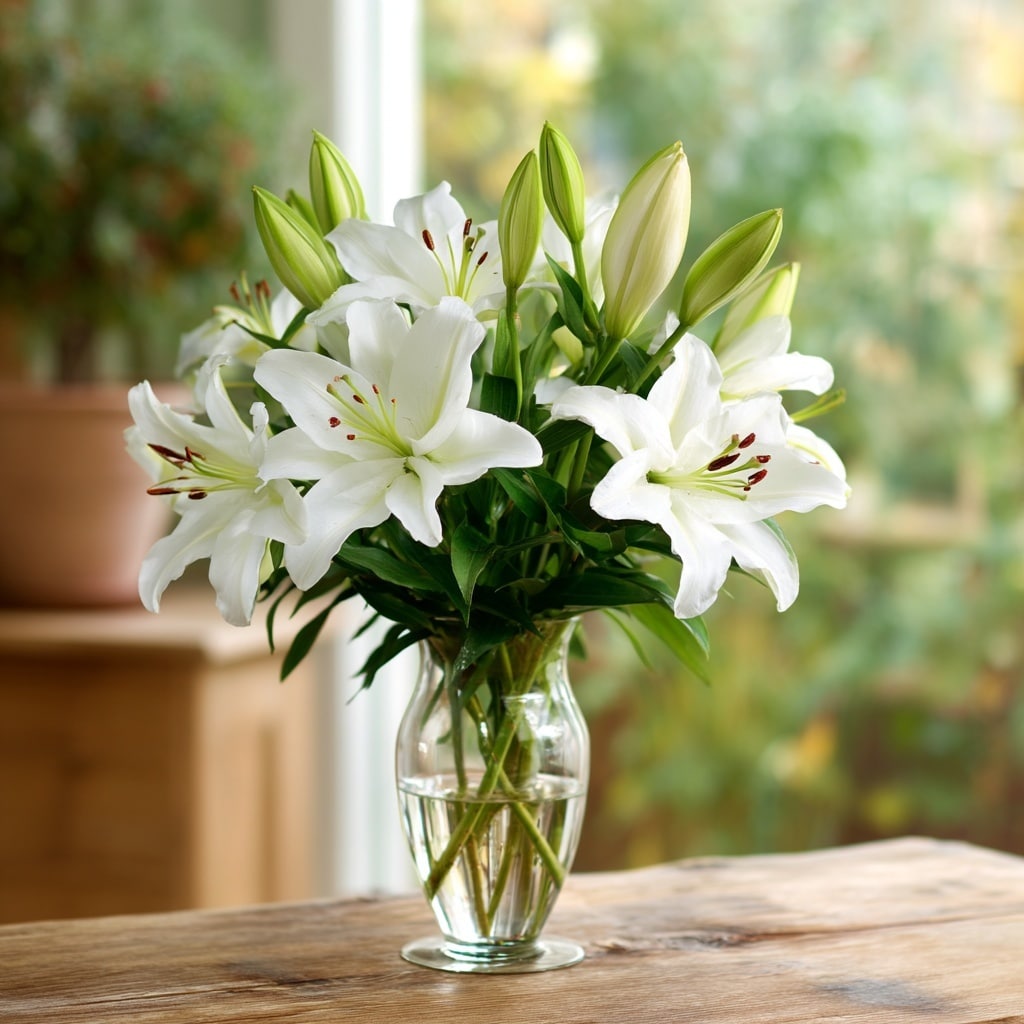Lilies are a timeless favorite for adding elegance and fragrance to any room, but their beauty often feels fleeting. Many people wonder how long these graceful blooms can actually last in a vase — and more importantly, how to keep them looking fresh for as long as possible. With the right care, lilies can remain vibrant for up to two weeks, but several factors influence their vase life, from the type of lily to how they’re trimmed and stored.
This guide walks you through exactly how long lilies last once cut, what causes them to wilt faster, and practical care tips you can use to extend their life. Whether you’ve received a bouquet or picked them fresh from your garden, a few simple changes can help your lilies stay fresher, longer.
Table of Contents
How Long Lilies Last In A Vase
When properly cared for, cut lilies can last anywhere from 7 to 14 days in a vase. Their longevity depends on a few key factors such as the lily variety, room temperature, water quality, and how recently they were cut. Typically, lilies arrive with several buds closed, giving you the benefit of watching them open gradually over time — often stretching their visual appeal across a full two weeks.
The first few days are especially important. Lilies begin to absorb water and nutrients immediately, so their initial environment plays a major role in how well they perform. A clean vase, fresh water, and proper stem trimming are small but powerful steps that can make your lilies last longer.
Keep in mind, while the blooms may begin to fade after a week, with consistent care, many lilies still maintain their beauty well into the second week — offering excellent value for both home décor and gifts.
5 Factors That Affect the Longevity of Lilies

Several environmental and handling factors influence how long lilies last after being cut. Understanding these variables can help you extend the life of your blooms and prevent premature wilting. Below are five key things that directly affect how fresh your lilies stay in a vase.
1. Varietal Differences
Not all lilies are created equal. Some types are naturally longer-lasting than others:
- Asiatic lilies – Bright, bold colors and no scent. These tend to last 10–14 days and are quite hardy.
- Oriental lilies – Large, fragrant, and showy, but slightly more delicate. Their lifespan is usually 10–12 days.
- Trumpet lilies – With thick petals and sturdy stems, these can last up to 14 days with the right care.
- LA Hybrid lilies – A cross between Asiatic and Longiflorum lilies, they’re both beautiful and durable, often lasting 12–14 days.
Choosing a long-lasting variety gives you a head start in extending vase life.
2. Water Quality and Cleanliness
Lilies absorb a lot of water — but if that water is dirty or full of bacteria, their stems can become clogged and unable to take in what they need. Always use fresh, room-temperature water and change it every two days. A clean vase is just as crucial — rinse it thoroughly between uses to reduce bacterial growth.
3. Trimming Technique
How you cut the stems of your lilies plays a big role in how long they last. Always trim stems at a 45-degree angle under running water before placing them in a vase. This prevents air bubbles from blocking water flow. Re-trim every few days to keep water uptake efficient.
4. Temperature and Environment
Lilies prefer cool, shaded environments. Heat accelerates blooming and wilting. Keep them away from:
- Direct sunlight
- Radiators or heat vents
- Electronics
- Ripening fruit (which emits ethylene gas that shortens flower life)
A room around 18–22°C (64–72°F) is ideal.
5. Ethylene Gas Exposure
This naturally occurring plant hormone speeds up the aging process. Avoid placing your lilies near:
- Bananas, apples, avocados, and other ripening fruits
- Cigarette smoke
- Exhaust fumes
- Aging or wilting flowers
Proper placement can easily extend vase life by several days.
What To Do Once the Lily Flowers Fade

Even after your lilies begin to fade, the way you care for the remaining stems and foliage can influence the health of the plant — especially if they’re from your garden or a potted arrangement. Post-bloom maintenance helps preserve bulb strength, promotes regrowth, and ensures a more vibrant bloom cycle next time.
Deadhead Spent Blooms
Once a lily flower has wilted, remove it promptly by snipping just below the bloom. This prevents the plant from diverting energy into seed production. Instead, that energy gets redirected back into the bulb, supporting healthier and fuller flowers in future blooms.
Allow Foliage to Die Back Naturally
Don’t rush to cut the greenery once the blooms are gone. The leaves are still photosynthesizing — feeding the bulb for next season. Let the foliage yellow and wither completely before trimming it down. This ensures your lilies store enough energy to come back strong.
Maintain Soil Moisture
If your lilies are growing in soil (in a pot or garden), continue watering until the foliage dies off naturally. Keep the soil evenly moist, but avoid soggy conditions which can cause the bulbs to rot.
- Water deeply once or twice a week
- Avoid watering the leaves directly
- Use your finger to check soil depth for moisture
Apply Mulch for Winter Protection
In cooler climates, add a layer of mulch once the foliage has died back to insulate the bulbs through winter. Use organic materials like:
- Shredded bark
- Straw
- Dried leaves
- Pine needles
This helps retain soil moisture and protects against frost damage.
Avoid Lifting Bulbs Unless Necessary
Most lilies do best when left undisturbed in the ground. Lifting and replanting bulbs every season can interrupt their natural growth cycle. Only lift bulbs if:
- The soil is poorly draining
- You live in an area with harsh winter freezes
- The bulbs are overcrowded and need dividing
Otherwise, let your lilies settle in and multiply naturally.
5 Tips To Keep Lilies Fresh Longer

Cut lilies are stunning, but without the right care, they can wilt faster than expected. Whether you’re arranging a bouquet or caring for store-bought stems, a few simple techniques can help your flowers stay fresh and beautiful for up to two weeks.
1. Use a Clean Vase
Before arranging your lilies, always start with a clean vase. Bacteria from previous arrangements can linger and clog the stems, preventing proper water uptake.
- Wash the vase with hot, soapy water
- Rinse thoroughly to remove any residue
- Sanitize with a solution of 1 part bleach to 10 parts water, then rinse again
A spotless vase slows down bacterial growth and extends freshness.
2. Trim the Stems Properly
When you first receive or cut lilies, snip the stems at a 45-degree angle using clean, sharp scissors. This increases the surface area for water absorption and prevents the stem from resting flat at the bottom of the vase, which can block uptake.
- Re-trim every 2–3 days to keep water flowing freely
- Cut under running water or in a bowl of water to avoid air bubbles
3. Remove Excess Leaves
Leaves that sit below the waterline will rot quickly, encouraging bacteria that shortens your lilies’ vase life.
- Strip off all leaves that would be submerged
- Remove any yellowing or damaged leaves
- Leave enough greenery above the waterline to support the flower
4. Change the Water Regularly
Clean water is essential. Stale or cloudy water becomes a breeding ground for bacteria, which damages stems and cuts the life of your lilies short.
- Change the water every 2 days
- Rinse the vase and re-trim stems during each change
- Use room-temperature water with a floral preservative if available
5. Keep Them Cool and Away From Heat
Lilies thrive in cool, shaded environments. High temperatures cause faster blooming and wilting.
- Avoid placing them near sunny windows, heaters, or electronics
- Keep them away from fruit bowls — ripening fruit emits ethylene gas that causes lilies to age faster
- Ideal temperature: 18–22°C (64–72°F)
With these care steps, you can enjoy your lilies at their freshest for much longer than usual.
Conclusion About Lilies and Their Longevity

With the right care, lilies can remain a showstopping centerpiece in your home for up to two full weeks. From choosing the right variety to trimming stems correctly and keeping them away from heat and ethylene gas, every small step helps extend their beauty.
Whether you’re placing them in a vase or growing them in your garden, a little extra attention goes a long way. By following simple care routines like changing the water, using a clean vase, and deadheading spent blooms, you’ll get more life and enjoyment out of your lilies.
Want to make your indoor blooms last even longer? Consider pairing your lily bouquet with long-lasting companions like chrysanthemums or alstroemeria — or check out our article on how to care for potted lilies indoors for even more long-term beauty.





